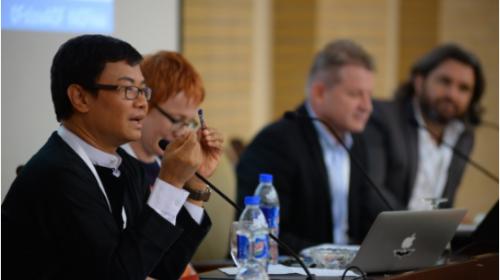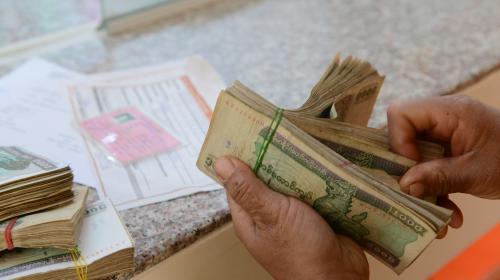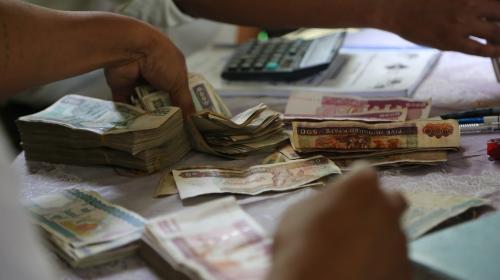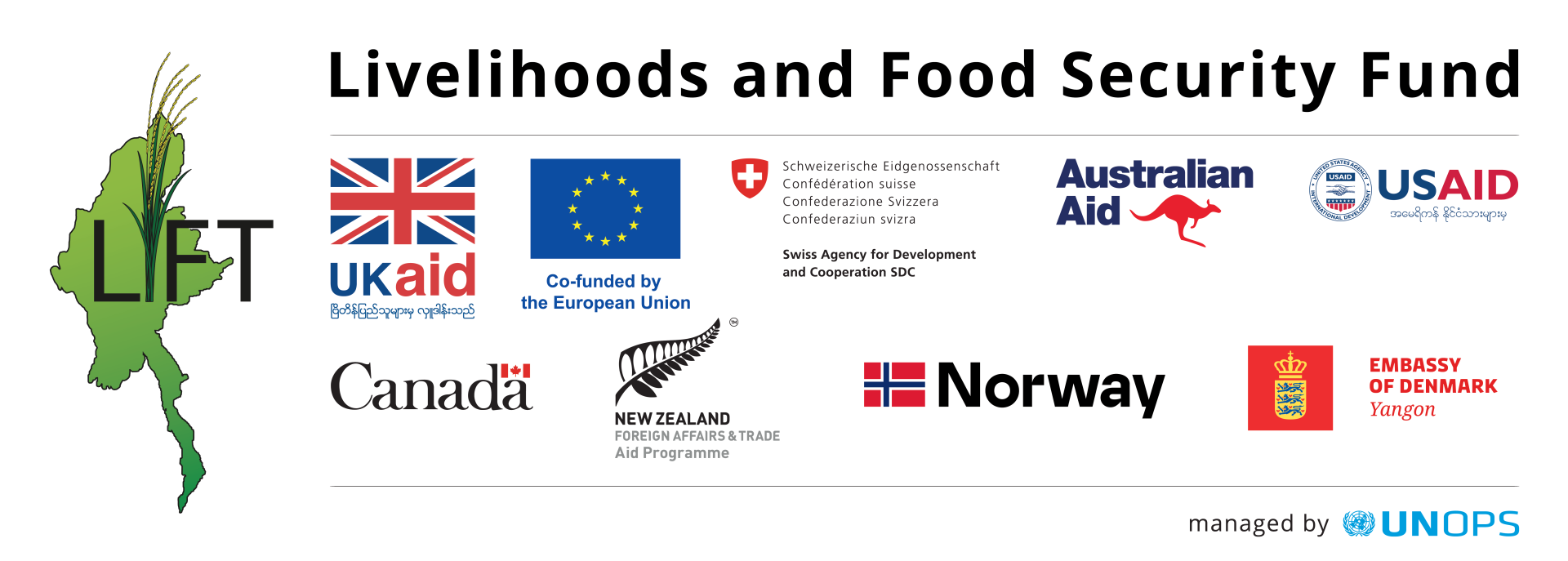
LIFT’s catalytic impact on the Myanmar microfinance industry was highlighted yesterday at the first edition of the Myanmar Microfinance Forum in Nay Pyi Taw. The annual event is organised by the Myanmar Microfinance Association (MMFA) under the guidance of the Ministry of Planning & Finance (MoPF) and it aims to further accelerate growth in Myanmar’s microfinance sector. The forum is supported by LIFT, USAID and ADA.
Speaking ahead of the event, H.E. UK Ambassador to Myanmar Dan Chugg said: “Microfinance plays a really important role in helping the country’s poorest people change their lives for good. Through LIFT, the UK is helping to provide vital access to finance for nearly three million people in Myanmar, of whom 90 percent are women.
“I am delighted that UK aid can support LIFT’s Microfinance Capital Markets Programme, which has encouraged private sector investment providing loans worth a total of 322 million USD to date. These loans help families to improve their livelihoods for the long term, and ensure people are in a better financial position to withstand possible disasters and shocks caused by climate change.”
The United States also supported the Microfinance Forum through the U.S. Agency for International Development (USAID). U.S. Ambassador Scot Marciel said: “U.S.-supported microfinance programmes in Myanmar, including through LIFT, provide opportunities for farmers and people who otherwise would not have access to affordable credit to expand their businesses and improve their livelihoods.”
Around 65 per cent of all MFI clients in Myanmar benefit from LIFT’s support. This year alone, LIFT’s microfinance partners will disburse more than 1 billion US dollars’ worth of loans. The total assets in Myanmar’s MFI sector are worth 1.3 billion US dollars, with LIFT-supported MFIs’ total assets at 707 million USD (53 per cent).
Pete Howson, LIFT Fund Board Member and UKAid’s Livelihoods Adviser, delivered LIFT’s welcome remarks to the forum. He said: “The empowering nature of the microfinance sector is unquestionable. It is fantastic to be able to say that 90 per cent of LIFT’s MFI clients are women. But also, to recognise that MFIs, through LIFT’s investments, are reaching many more beneficiaries, including people with disabilities, internally displaced people, migrants and landless.
“And in just this current calendar year, LIFT’s microfinance partners will disburse more than 1 billion US dollars worth of loans. As a donor, when our total investment in MFIs is USD 56 million to date…. well that’s what we would call pretty solid value for money, and a welcome return on our own investment.”
Curtis Slover, LIFT’s Finance, Private Sector and Agriculture Officer, spoke on a panel at the forum. He pointed out the strength and stability of the Myanmar microfinance sector: “Looking at return on assets - it’s very good in Myanmar. Return on equity capital is double. Any international investor would like to come here. Growth has been impressive, and the Government, LIFT and the MFIs should all congratulate themselves.”
He continued: “But Myanmar is extremely prone to disasters, and climate change emphasises this fragility. A major disaster would have big implications for the microfinance sector. That is why LIFT is developing, together with the Government and the Asian Development Bank, a Contingent Disaster Liquidity Facility (CDLF) for Myanmar MFIs. The facility will offer contingent loans to MFIs for on-lending to disaster-affected clients, for recovery purposes. It will provide concrete and timely support to beneficiaries in the event of a climate change induced disaster.” CDLF is funded by the Government of Canada.
A new financial literacy booklet produced by LIFT was also launched at the event. The Financial Literacy Booklet 2.0 is a significant part of LIFT’s Financial Inclusion Programme. The access to finance by MFI clients is diverse and complex — they borrow from many sources including family, friends, pawnbrokers, moneylenders and MFIs. Financial education helps the poor to connect more effectively with the financial landscape and choose among financial options to better manage the resources they have. Further, financial education empowers the poor, makes them more proactive, protects them against risks, opens up new opportunities and increases their self-confidence.
Microfinance is an effective means of providing financial services to poor and low-income people who do not generally have access to such services from formal financial institutions. The microfinance sector presents tremendous opportunities to be an enabler of sustainable poverty reduction and economic progress. At present, there are 5.6 million clients in Myanmar’s microfinance sector and they are served by 189 local and foreign licenced MFIs.
More than 250 people attended the forum, including officials from MoPF and the Financial Regulatory Department (FRD), representatives of MFIs operating in Myanmar, SME and entrepreneurship promotion agencies, technology companies and development partners. The forum is an annual gathering of Myanmar’s microfinance stakeholders to discuss the successes of the local microfinance sector, as well as industry regulations and sector developments. The various stakeholders shared strategies of ways for microfinance institutions (MFIs) to help build a stronger microfinance sector for the country, while fulfilling their social missions.
The presentations and discussions addressed the following topics: responsible finance, code of conduct for MFIs and social performance; financial literacy; microfinance industry developments, opportunities and challenges, lessons from abroad; microfinance product design; and the role of MMFA and its goal to support a stronger microfinance sector.





